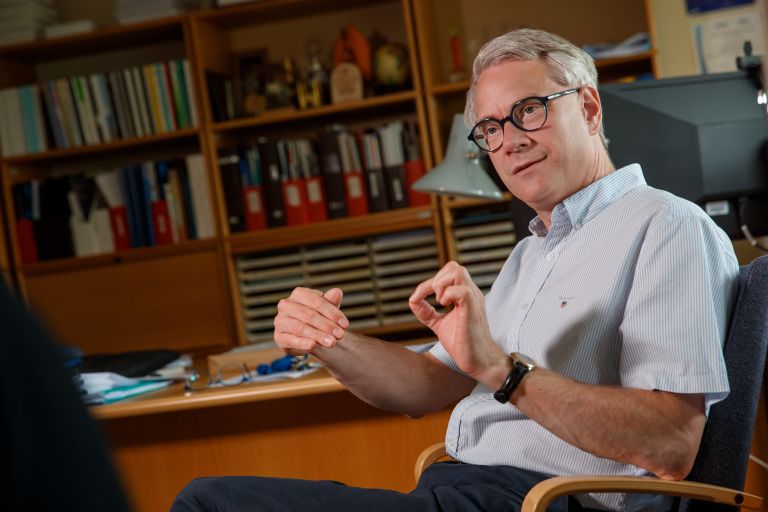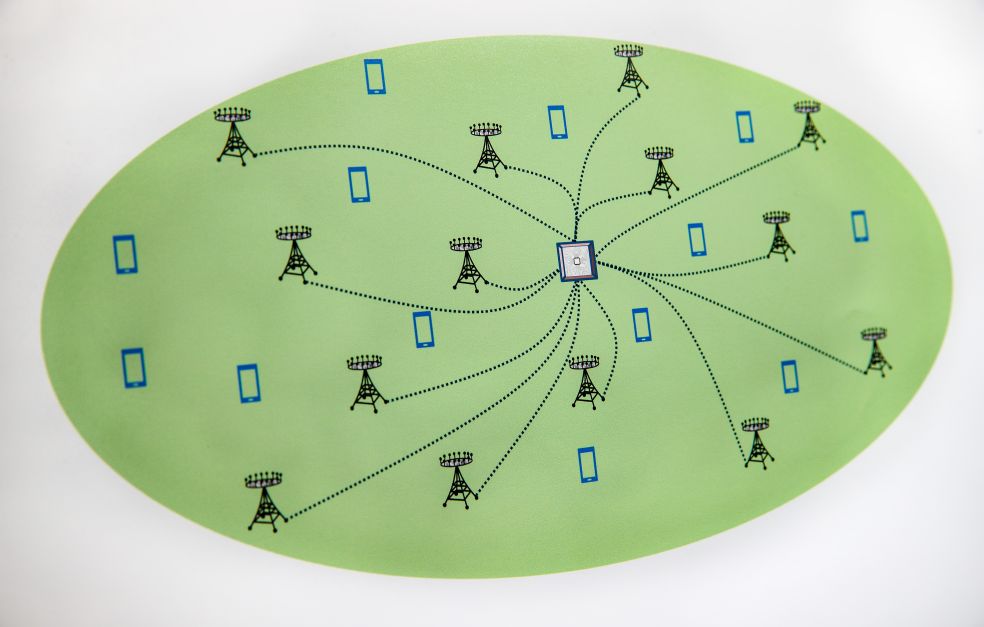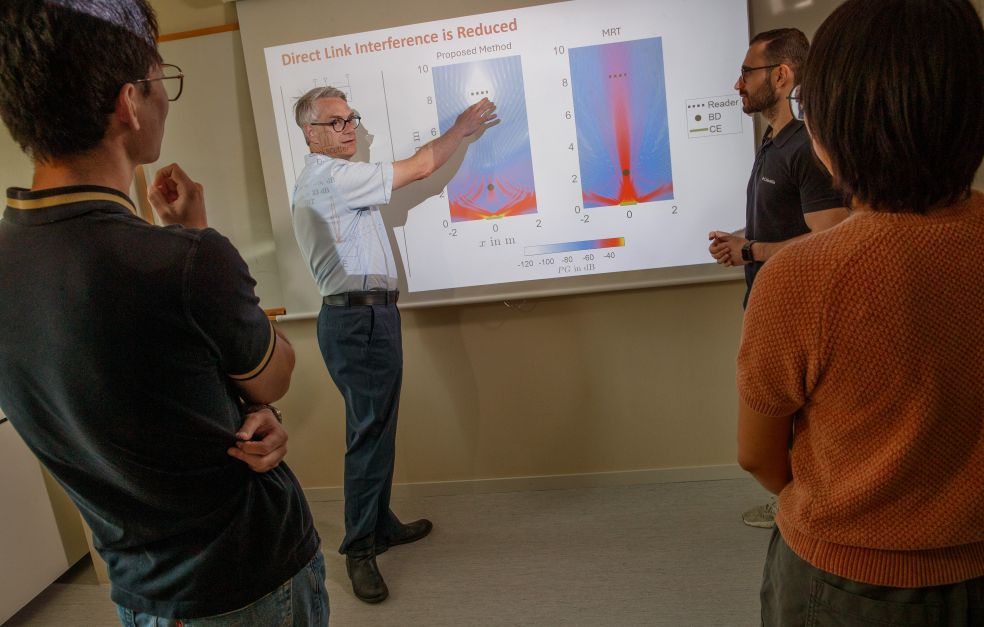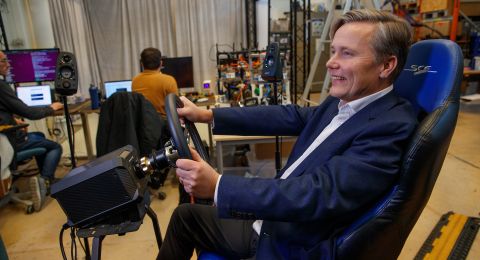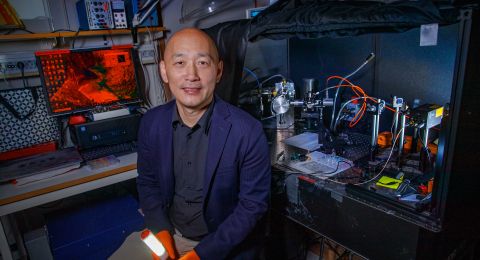Devices in next-generation wireless radio networks, such as 6G and others, are expected to be extremely energy-efficient and communicate ultra-fast. Erik G. Larsson is researching technologies that can enable smart glasses and sensors, handle AI data and counteract antagonistic jamming signals.
Erik G. Larsson
Professor of Communication Systems
Wallenberg Scholar
Institution:
Linköping University
Research field:
Communication technology, radio technology, and AI, 6G and robust technologies
As a professor of communication systems at Linköping University, Larsson has many irons in the fire. A Wallenberg Scholar, his focus is on solving technical problems to enable and prepare for wireless information systems that might be deployed in five, ten or twenty years.
“Wireless systems of the future might bring to mind terrestrial mobile radio, 6G and new types of smart phone communicating within the networks. But we’re working on more fundamental method and algorithm development that is not confined to mobile communication,” he says.
The research team has developed various future scenarios. These include new types of connected electronic devices – smart eyeglasses being one example. Other scenarios involve large-scale connected sensor networks, such as those that measure and monitor temperature and environment in agriculture, factories and other facilities.
“Cooler than Wi-Fi”
“Most applications don't care much about which network they are connected to, whether it’s broadband via land or air. But for sensors or drones, for example, it’s important to be able to communicate machine-to-machine,” says Larsson.
The Linköping researchers also believe that 6G will bring new network technologies, ultrafast communication, augmented reality and the transmission of new types of AI-generated data.
To ensure radio networks can handle all these new tasks, the team is particularly interested in techniques that reduce power consumption in the networks and individual mobile devices or units.
Larsson considers that one of the more promising current radio technologies involves radio waves sent from a base station being reflected back via the mobile device. This well-known phenomenon is called “backscatter.”
“The technology enables radio electronic devices, such as mobile phones, to be made extremely energy-efficient because they reflect incoming radiation rather than generating it themselves.”
Integrating technologies
One question facing the researchers is how backscattering can be integrated with another wireless communication technology called Distributed MIMO (D-MIMO), which involves groups of multiple antennas and processors spread over a sizeable geographical area.
One might say that conventional radio receivers, mobile radio systems and existing standards are designed to deliver capacity – not to withstand deliberate jamming attacks.
One advantage of D-MIMO is that the antennas enhance each other’s array. The array can be likened to a structured field containing many data elements. The result is that radio signals do not scatter in all directions as they do around ordinary base stations but, like a focused beam, can be directed to “illuminate” a specific area with extensive radio traffic.
Is it possible, then, to integrate energy-efficient backscattering and D-MIMO to optimize communication between transmitters and receivers?
“Yes – that’s one of the fundamental problems we’re studying at the basic research level. It’s mainly a question of avoiding interference or disturbances of various kinds,” says Larsson.
Another way to increase the use of radio networks is by duplexing. The technique does not work well for mobile telephony but can be used to communicate between base stations and sensors or drones.
The method involves a base station or mobile phone, sensor or drone transmitting alternately. The researchers intend to investigate whether the technique can be optimized and perhaps also combined with machine-to-machine technology.
“These types of system must not only cope with images and streaming video but also AI-generated messages that may consist solely of mathematical quantities or numerical values.”
Not robust
Larsson believes that a growing and underexplored branch of information systems concerns their security aspects. Technological developments, as well as new threats, increase the risk of sabotage.
“Wireless links can be jammed. But we haven’t seen much pressure on mobile systems compared with satellite navigation in GPS systems,” he says.
Attacks from jammers occur daily over the Baltic Sea – suspected to come from Russia.
Among other things, spectra of synthetic signals can be transmitted at high power to drown out or jam ordinary satellite navigation, as Larsson explains:
“One might say that conventional radio receivers, mobile radio systems and existing standards are designed to deliver capacity – not to withstand deliberate jamming attacks.”
New applications, such as drones, also add to risks. One grim scenario is that many jammers could be deployed simultaneously to target specific objectives. But new microelectronics poses additional threats.
“Developments are so rapid that things thought impossible on mobile devices suddenly become feasible,” says Larsson.
Text Monica Kleja
Translation Maxwell Arding
Photo Magnus Bergström

